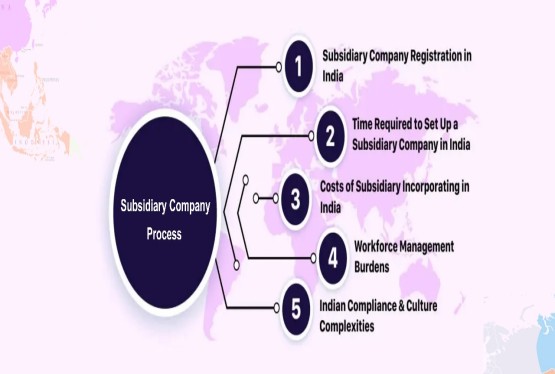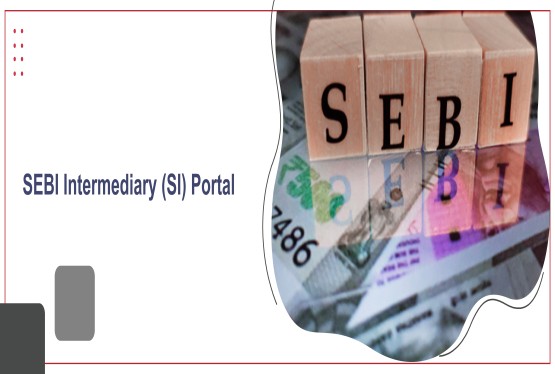India's journey towards 6G technology is a significant step in its technological advancement and has broad implications for businesses and industries. Last year, India unveiled its Bharat 6G Project to fund deployment of this next-generation technology in India. In this post, Compliance Calendar assesses the impact of 6G connectivity on business and industry, and throws light on how it can revolutionize India’s growing economy.
Overview of the Bharat 6G Vision
India's move towards 6G technology is not just a leap in telecommunications but a comprehensive initiative that spans economic growth, technological innovation, global leadership, and societal transformation. With its focus on ultra-fast speeds, low latency, and widespread connectivity, The Bharat 6G vision is poised to revolutionize various sectors, from healthcare and education to smart cities and transportation.
-
Development and Deployment: India is developing and planning to deploy 6G technology by 2030, as part of the Bharat 6G Vision. This initiative aims to establish secure, intelligent, and widespread connectivity, which could dramatically transform the Indian economy.
-
As part of this project, the first phase of implementation will be from 2023 to 2025 and the second phase from 2025 to 2030.
-
In the first phase, the government aims to provide support to explorative ideas, key pathways and proof of concept tests.
-
In the second phase, ideas that establish use cases and benefits, create implementational IPs and test beds promising commercialization will be promoted.
-
Patents and International Interest: India is fast becoming a leading global supplier of intellectual property and has acquired over 127 patents for 6G technology, drawing international interest, especially from the US, for its technological advancements. India also offers competitive advantages due to its low cost, affordable 6G solutions.
-
Government Investment: The government has invested INR 2,240 million in a new 6G Test Bed to support R&D for startups, researchers, and the industry. An Apex council has also been created to focus on aspects that help in ease of business across segments that can be transformed by 6G, including standardization, identification of spectrum for 6G usage and creating a comprehensive ecosystem for devices and systems.
Advantages and Potential Impacts on Business
-
Speed and Connectivity: 6G promises ultra-low latency and speeds up to 1 terabit per second, which is a thousand times faster than 5G. This will significantly benefit sectors like AI, robotics, and the metaverse.
-
India’s growing telecom market: India is the second largest telecom market globally with over 1.2 billion digital subscribers. With over 2.5 million km of Optical Fiber lines laid by the government and private sector and over 800 million broadband users, opportunities are ripe for foreign and Indian players to benefit from this enhanced connectivity.
-
Healthcare and Education: In healthcare, 6G will enhance telemedicine and remote patient monitoring, while in education, it will facilitate immersive learning experiences through AR and VR.
-
Smart Cities and Transportation: 6G will play a crucial role in developing intelligent, interconnected urban environments and improving transportation safety and efficiency.
-
Economic Growth and Digital Banking: India’s core digital economy grew 2.5 times faster than the national economy, indicating the potential for significant economic growth spurred by 6G technology. Over 70 million e-authentications are done every day in India, with over 8 billion UPI transactions every month. Thus, 6G is creating new opportunities for businesses engaged in banking solutions and communications.
Industry level significant impacts of 6G transmission
-
Innovation in IoT and Smart Devices : The introduction of 6G will likely coincide with a massive expansion in the Internet of Things (IoT), with more devices connected than ever before. This can lead to better data collection and analysis for industries, enabling smarter decision-making and operational efficiency.
-
Improved AI and Machine Learning Applications: The increased bandwidth and faster data transfer rates of 6G will allow more complex AI algorithms to be run, enhancing the capabilities of AI-driven solutions in industries like healthcare, manufacturing, and retail.
-
Advancements in Remote Work and Virtual Collaboration: 6G will enable more immersive and interactive remote working environments through technologies like augmented reality (AR) and virtual reality (VR), which can lead to more productive and engaging virtual workplaces.
-
Growth in Autonomous Systems: Enhanced connectivity and faster data processing will be crucial for the development of autonomous systems, such as self-driving cars and automated industrial processes. This can lead to safer, more efficient, and cost-effective operations in sectors like transportation and manufacturing.
-
Agricultural and Environmental Projects : 6G can transform agriculture through precision farming techniques, which involve the use of connected sensors, drones, and AI to optimize farming practices and increase crop yields. The government of India is encouraging private investments in smart and precision agriculture through initiatives like the AgriStack and promoting tech startups under the Digital India and Mission. 6G can also enable more effective environmental monitoring systems, aiding in climate change research and sustainable resource management.
Government Initiatives and Collaborations
-
R&D and Standardization: Collaboration between academia, industry, and government is emphasized for developing crucial technologies like quantum communication and AI/ML. The Bharat 6G Vision calls for significant R&D funding and the creation of administrative structures for successful implementation
-
Digital Inclusion and Global Leadership: The vision document released by the government focuses on making 6G an enabler of digital inclusion and aims to position India as a global leader in 6G technology, aligning with the 'Atmanirbhar Bharat' vision.
-
ITU Area Office and Innovation Centre launched in India: Prime Minister Narendra Modi inaugurated the ITU Area Office and Innovation Centre in 2023, underlining India's commitment to 6G development and its role in the global telecommunications industry. ITU is the United Nations' specialized agency for information and communication technologies and this office will serve India, Nepal, Bhutan, Bangladesh, Sri Lanka, Maldives, Afghanistan and Iran. This initiative aims to make India a significant contributor to 6G design, development, and deployment by 2030.
-
Telecom Technology Development Fund 2.0 - Telecom Technology Development Fund (TTDF) has been setup under Universal Services Obligation Fund (USOF) of Department of Telecom (DOT), Government of India to promote the ecosystem for research, design, prototyping, proof of concept testing, IPR creation, field testing, security, certification and manufacturing of products etc. in telecommunication field. Under this initiative, proposals are sought for :
-
Providing innovative cost-effective solutions for telecom services in rural and remote areas
-
Products that are currently imported in large quantities by manufacturers of end-products, or manufactured in limited quantities
-
Semiconductor SoCs or modules, transceivers, modems, advanced antennas
-
R&D in next-generation technologies (e.g. 6G wireless technologies such as Ultra-High-Speed wireless communications in the mid-band spectrum or ultra-wide band communications in mm-wave and terahertz bands, ultra-wide band, low latency and space division multiplexed optical systems, quantum technologies for communications, new user-interface and sensor technologies for mobile phones, and so on), involving generation of IP (particularly standards-essential IP)
-
Digital Communication Innovation Square : This scheme aims to promote the ecosystem for research, design, development of IPR, concepts and value chain to make India a hub of telecom and digital communication services. It funds companies bridging the gap between R&D and communication. It also supports apps to improve services offered on telecom networks, or for import substitution of a mature subsystem or telecom system component, or for improving the cost-effectiveness/efficiency of deployed telecom networks.
“Telecom technology is not a mode to power but India’s mission to empower”
- Prime Minister, at the unveiling of the Bharat 6G Vision Document
As India positions itself as a leader in 6G technology, it stands to make a substantial impact on the global stage, fostering international cooperation and technological advancement. Compliance Calendar has helped hundreds of startups and foreign companies in starting business in India. Connect with our experts today to get the best of advice on running a compliant business in India.












_crop10_thumb.jpg)





_crop10_thumb.jpg)



























-Form_crop10_thumb.jpg)

_crop10_thumb.jpg)























_learn_crop10_thumb.jpeg)
































_crop10_thumb.jpg)

_crop10_thumb.jpg)





















_crop10_thumb.jpg)















_for_Foreign_Directors_learn_crop10_thumb.jpeg)




_Act,_2015_learn_crop10_thumb.jpg)



































_learn_crop10_thumb.jpg)

































